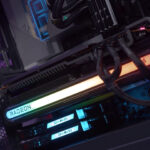AMD Set to Merge Gaming and Data-Center GPU Architectures into UDNA Architecture
AMD has announced its strategic decision to consolidate the architectures of its consumer and data-center GPUs under the innovative UDNA architecture. This marks a significant shift for the company, which had diverged its focus following the transition from GCN to RDNA.
Jack Huynh, the senior VP and GM of AMD’s computing and graphics business group, recently shared valuable insights with Tom’s Hardware regarding this architectural integration. The objective behind this move is to enhance scalability and provide better support for developers within the AMD ecosystem.
This shift follows AMD’s 2020 decision to segment its architecture post-GCN into RDNA for gaming and CDNA for data centers. While this segmentation initially made sense, it posed challenges for developers adapting to the new structure. As a response to the feedback received, AMD is now moving towards the recombination of its GPU architectures.
The primary goal of this merge is to streamline the architecture, offering developers a unified platform to work on. Whether dealing with large GPU clusters or individual gaming GPUs, this consolidated approach will simplify development processes. Additionally, AMD plans to future-proof its advancements with upcoming generations like UDNA5, UDNA6, and UDNA7 to ensure optimizations persist across evolving memory subsystems.
For more information on this shift in AMD’s GPU architecture strategy, you can read the original article here.











